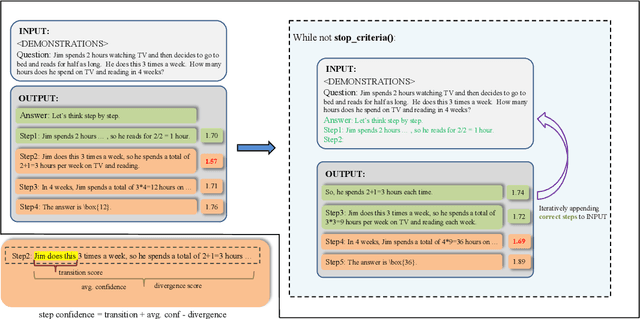Biyan Zhou
Event-based Neural Spike Detection Using Spiking Neural Networks for Neuromorphic iBMI Systems
May 10, 2025Abstract:Implantable brain-machine interfaces (iBMIs) are evolving to record from thousands of neurons wirelessly but face challenges in data bandwidth, power consumption, and implant size. We propose a novel Spiking Neural Network Spike Detector (SNN-SPD) that processes event-based neural data generated via delta modulation and pulse count modulation, converting signals into sparse events. By leveraging the temporal dynamics and inherent sparsity of spiking neural networks, our method improves spike detection performance while maintaining low computational overhead suitable for implantable devices. Our experimental results demonstrate that the proposed SNN-SPD achieves an accuracy of 95.72% at high noise levels (standard deviation 0.2), which is about 2% higher than the existing Artificial Neural Network Spike Detector (ANN-SPD). Moreover, SNN-SPD requires only 0.41% of the computation and about 26.62% of the weight parameters compared to ANN-SPD, with zero multiplications. This approach balances efficiency and performance, enabling effective data compression and power savings for next-generation iBMIs.
Architectural Exploration of Hybrid Neural Decoders for Neuromorphic Implantable BMI
May 09, 2025Abstract:This work presents an efficient decoding pipeline for neuromorphic implantable brain-machine interfaces (Neu-iBMI), leveraging sparse neural event data from an event-based neural sensing scheme. We introduce a tunable event filter (EvFilter), which also functions as a spike detector (EvFilter-SPD), significantly reducing the number of events processed for decoding by 192X and 554X, respectively. The proposed pipeline achieves high decoding performance, up to R^2=0.73, with ANN- and SNN-based decoders, eliminating the need for signal recovery, spike detection, or sorting, commonly performed in conventional iBMI systems. The SNN-Decoder reduces computations and memory required by 5-23X compared to NN-, and LSTM-Decoders, while the ST-NN-Decoder delivers similar performance to an LSTM-Decoder requiring 2.5X fewer resources. This streamlined approach significantly reduces computational and memory demands, making it ideal for low-power, on-implant, or wearable iBMIs.
Learning From Correctness Without Prompting Makes LLM Efficient Reasoner
Mar 28, 2024



Abstract:Large language models (LLMs) have demonstrated outstanding performance across various tasks, yet they still exhibit limitations such as hallucination, unfaithful reasoning, and toxic content. One potential approach to mitigate these issues is learning from human or external feedback (e.g. tools). In this paper, we introduce an intrinsic self-correct reasoning framework for LLMs that eliminates the need for human feedback, external tools, and handcraft prompts. The proposed framework, based on a multi-step reasoning paradigm \textbf{Le}arning from \textbf{Co}rrectness (\textsc{LeCo}), improves reasoning performance without needing to learn from errors. This paradigm prioritizes learning from correct reasoning steps, and a unique method to measure confidence for each reasoning step based on generation logits. Experimental results across various multi-step reasoning tasks demonstrate the effectiveness of the framework in improving reasoning performance with reduced token consumption.
ANN vs SNN: A case study for Neural Decoding in Implantable Brain-Machine Interfaces
Dec 26, 2023Abstract:While it is important to make implantable brain-machine interfaces (iBMI) wireless to increase patient comfort and safety, the trend of increased channel count in recent neural probes poses a challenge due to the concomitant increase in the data rate. Extracting information from raw data at the source by using edge computing is a promising solution to this problem, with integrated intention decoders providing the best compression ratio. In this work, we compare different neural networks (NN) for motor decoding in terms of accuracy and implementation cost. We further show that combining traditional signal processing techniques with machine learning ones deliver surprisingly good performance even with simple NNs. Adding a block Bidirectional Bessel filter provided maximum gains of $\approx 0.05$, $0.04$ and $0.03$ in $R^2$ for ANN\_3d, SNN\_3D and ANN models, while the gains were lower ($\approx 0.02$ or less) for LSTM and SNN\_streaming models. Increasing training data helped improve the $R^2$ of all models by $0.03-0.04$ indicating they have more capacity for future improvement. In general, LSTM and SNN\_streaming models occupy the high and low ends of the pareto curves (for accuracy vs. memory/operations) respectively while SNN\_3D and ANN\_3D occupy intermediate positions. Our work presents state of the art results for this dataset and paves the way for decoder-integrated-implants of the future.
NeuroBench: Advancing Neuromorphic Computing through Collaborative, Fair and Representative Benchmarking
Apr 15, 2023



Abstract:The field of neuromorphic computing holds great promise in terms of advancing computing efficiency and capabilities by following brain-inspired principles. However, the rich diversity of techniques employed in neuromorphic research has resulted in a lack of clear standards for benchmarking, hindering effective evaluation of the advantages and strengths of neuromorphic methods compared to traditional deep-learning-based methods. This paper presents a collaborative effort, bringing together members from academia and the industry, to define benchmarks for neuromorphic computing: NeuroBench. The goals of NeuroBench are to be a collaborative, fair, and representative benchmark suite developed by the community, for the community. In this paper, we discuss the challenges associated with benchmarking neuromorphic solutions, and outline the key features of NeuroBench. We believe that NeuroBench will be a significant step towards defining standards that can unify the goals of neuromorphic computing and drive its technological progress. Please visit neurobench.ai for the latest updates on the benchmark tasks and metrics.
 Add to Chrome
Add to Chrome Add to Firefox
Add to Firefox Add to Edge
Add to Edge